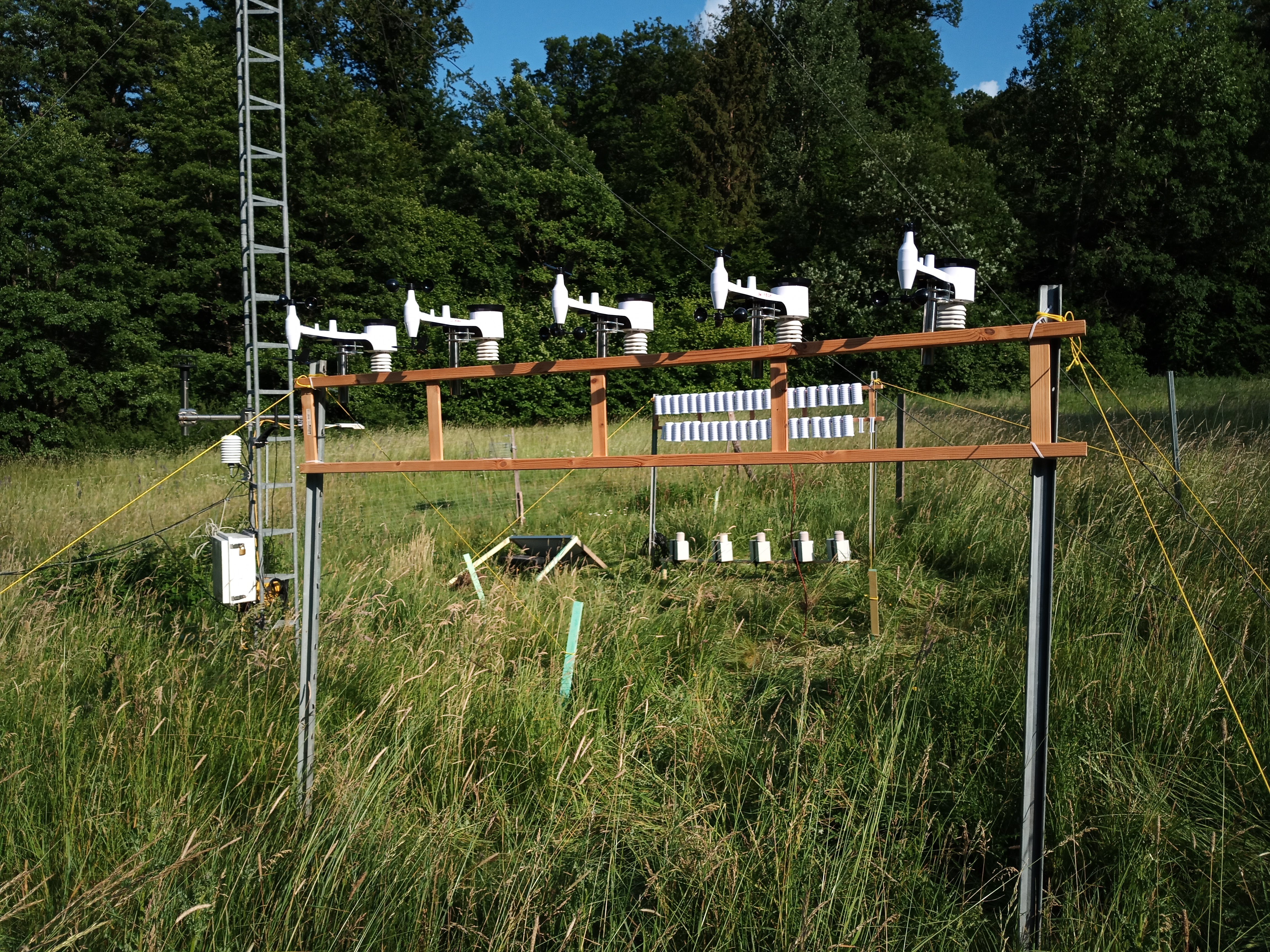Fine Offset: Weather and environmental sensors
The sensors from Fine Offset are re-branded and partly modified by the resellers. This article deals with sensors from the german re-seller froggit and the US re-seller ecowitt. More precise the DP-/GW SmartHubs WiFi Gateway with temperature, humidity & Pressure which is developed by fine offset. The unique selling point of the LoRa-Wifi gateway is the extraordinarily extensive possibility of connecting radio-bound sensors.

Features
Currently, depending on the gateway, a maximum of 8 sensors of the following types can be connected at the same time:
- DP150/WN51 soil temperature sensors,
- DP50/WH31 multi channel temperature and humidity sensors
- WN34 wire probe thermometer
- DP10/WN35 leaf wetness sensors
- DP100 soil moisture sensors;
a maximum of 4:
- DP200/WH41/WH43 PM2.5/PM10 sensors
- WH45 Water leak sensors
a maximum of 2:
- DP250/WH45 CO2 / PM2.5 / PM10 / temperatur / moisture sensor
- DP60/WH57 Lightning sensor
For the basic weather parameters as rain, wind vector insolation temperature and humidity one of the compatible outdoor basis units as the DP1100 or WH3000
Sensor Specification
GW1000/DP1500 WiFi hub:
- Frequency: 868Mhz
- Air temperature range: -10°C to +60°C, resolution: 0.1°C, accuracy: +/- 1°C
- Air humidity range: 10% - 99%, Resolution: 1%, accuracy: +/- 5%.
- Air pressure range: 300-1100hPa, resolution: 0.1 hPa, accuracy: +/- 5hPa
- Power supply: USB 5V
DP50 temperature/humidity sensor:
- Frequency: 868Mhz
- Air temperature range: -10°C to +60°C, resolution: 0.1.°C, accuracy: +/- 1°C
- Air humidity range: 10% - 99%, resolution: 1%, accuracy: +/- 5%.
- Transmission interval: 48 seconds
- Power supply: 2 x 1.5V AA batteries
Base Unit:
- Frequency: 868Mhz
- Temperature range: -40°C to +60°C, accuracy: +/- 1°C
- Air humidity range: 10% - 99%, accuracy: +/- 5%
- Precipitation: range 0-9999mm, resolution +/- 0.25mm, accuracy: +/- 10%
- Wind speed: 0-50m/s, accuracy: +/- 3.5 km/h or 10%
- Wind speed/gust calculation every 16 s
- Wind direction accuracy: +/- 1°
- UVI: range: 0 - 15 index, UV accuracy: +/- 15%
- Solar radiation: range 0 - 200k Lux, accuracy +/- 15%
- Measuring interval outdoor unit: 16 seconds
- Power supply: Outdoor unit: 2 x 1.5V AA batteries. The primary energy source is the solar panel. The batteries provide backup power when solar energy is limited.
Calibration Concept
The low budget sensors are usually lacking of a stable measurement quality. To obtain reliable micro climate data a two step calibration process is suggested.
- The measurements of all sensors (preferably in a climate chamber) will be statistically analysed to identify sensor which produce systematic and significant outliers.
- The sensors are calibrated against an operational running high price reference station in the field.